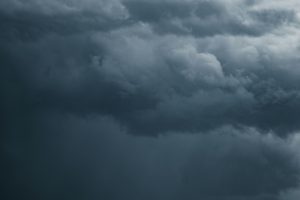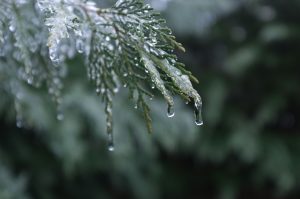A Different Way to Visualize Maximum and Minimum Temperature Distributions
Mean temperatures are often used to characterize the climate on time scales of weeks to millennia, but they are not the whole story. Belaboring the obvious, the variations in temperature also matter.
Read moreDoes the Arctic Oscillation Relate to the Variability in the Weather of WA?
The term “polar vortex” has been in the news recently, prompting this piece on the connection of the Arctic Oscillation (AO) to the weather of WA. In early January 2021, some attention was given to the polar vortex and the relationship to the sudden stratospheric warming that occurred near the pole (AO+).
Read moreThe Diurnal Cycle in Summer Temperatures in Washington State
Summer visitors to WA state are sometimes struck by how cool it is during the late night and early morning hours, and how late in the day it stays warm. This can be especially the case during our hottest weather, when peak temperatures often occur at 5 to 6 PM local time.
Read moreThunderstorms in WA during the Summers of 1990-2019
Summers have been gradually getting warmer and more humid in WA state, with plenty of variability, but has that been accompanied by a tendency for more thunderstorms? We don’t get many thunderstorms compared to elsewhere in the US, especially east of the Continental Divide.
Read moreSpringtime Stream Temperatures in Washington
We have used this space to discuss ocean temperatures a number of times in recent years. Here, we will again consider water temperatures, but in this case for Washington State rivers, with a focus on the spring season.
Read moreLocalized Variations in Winter Minimum Temperatures
Recent cold overnight temperatures during Thanksgiving weekend 2019 have illustrated the variability from place to place that can emerge this time of year. There are many locations in WA state in which observing stations are not that far apart, but minimum temperatures vary substantially, particularly on clear, cold nights.
Read moreEasterly Flow in the Passes of the Washington Cascades
The Summit at Snoqualmie Pass has the lowest base elevation (2,840’) of any ski resort in the western US. Given its low elevation and proximity to the Pacific Ocean and hence maritime air masses – the mean 850 hPa flow during winter is from the southwest at about 5 m/s – how is it cold enough to stay in business?
Read moreThe Warm Nights of Summer 2019
The summer of 2019 included very near-normal daytime temperatures for Washington state. The mean maximum temperature anomaly for the state as a whole for the months of June through August was 0.3°F (relative to 1981-2010).
Read moreLow Streamflows on the Skagit River in Early Summer 2019
The warm and dry spring of 2019 has raised concerns about water supplies in parts of WA state. It is unclear how much it is a coincidence, but the same topic was addressed in this space a year ago.
Read moreMelting of the Cascade Mountain Snowpack in Spring
The date of 1 April is often considered the end of winter for the Cascade Mountains of the Pacific Northwest. Snow can continue to fall in the high country, of course, but the vast majority of the accumulation has generally occurred by that time of year.
Read more

